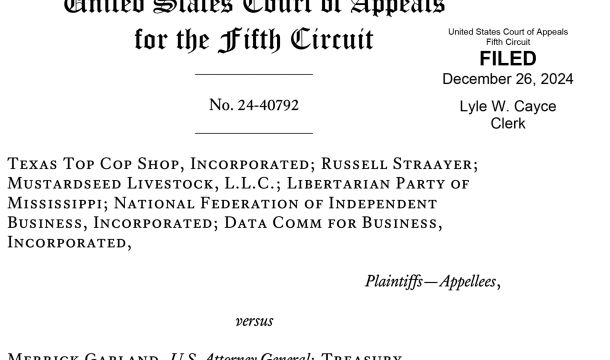The GovCon Bulletin™
03
Feb, 2023
DoD’s 2023 Small Business Strategy & One Thing Small Businesses Should Be Doing Now
Last week, on January 26, 2023, the U.S. Department of Defense (DoD) released its Small Business Strategy (Strategy). While the Strategy has received a fair amount of attention, a DoD Memorandum issued the next day, on January 27, 2023, may have a more immediate impact in opening up opportunities for small businesses, and in particular 8(a) businesses and small disadvantaged business (SDB’s), women-owned small businesses (WOSBs), service-disabled veteran owned small businesses (SDVOSBs), and HUBZone small businesses (HUBZones).
Increased Opportunities For Socioeconomic Small Businesses In The Short Term
That January 27 DoD Memo reminds DoD agencies of instructions that the Office of Management and Budget (OMB) gave to federal agencies in earlier OMB memorandums. In those OMB memorandums, OMB informed federal agencies that for purposes of meeting their category management plan goals, the agencies would automatically receive credit - Tier 2 SUM credit, in particular - for awards made to certified and self-certified 8(a) businesses and other socioeconomic small businesses. The OMB memos also stressed that the achievement of socioeconomic and other small business goals should be prioritized over “Best In Class” contract goals.
The January 27 DoD Memo now provides additional guidance on how DoD agencies can implement these priorities, and that guidance may, in the near future, translate into more contracting opportunities for 8(a) businesses, SDB’s, WOSB’s, SDVOSB’s, and HUBZones.
DoD’s Strategy For Small Businesses As A Whole May Take Longer
DoD’s Strategy proposes a variety of initiatives to increase contract awards to small businesses as a whole that may take quite some time to implement. Before explaining the initiatives, DoD first sets the table by providing sobering statistics on small business participation in DoD procurements. On the one hand, DoD has generally met its small business prime contracting goals in the last 8 years. In addition, the total dollar amount of DoD contract obligations to small businesses fluctuated during the decade between 2011 and 2020, but ended up higher at the end of the decade than at the beginning. On the other hand, and more alarmingly, the number of small businesses receiving contract awards declined by 40% over that same time period. Without pointing the finger at any one cause, DoD touches on several obstacles that may have led to this massive consolidation in the small business sector, including confusing points of entry into the defense markets, improper bundling and consolidation, and understanding complex regulations.
DoD’s Strategy then outlines at least 24 different actions that DoD intends to take to turn things around and that are grouped under three different strategic objectives. For example, DoD’s Strategic Objective 1 is to “Implement a Unified Management Approach of Small Business Programs and Activities.” One of the actions that DoD plans to take to achieve that objective is to establish a “small business integration group.” Recognizing that there are a number of small business programs and activities spread out among several different DoD departments and agencies, DoD proposes that the small business integration group will work to improve collaboration and alignment between DoD’s small business programs. DoD also plans to provide additional training to its acquisition personnel and to turn its current small business website (at www.business.defense.gov) into a common entry point for small businesses.
DoD’s Strategic Objective 2 is to “Ensure the Department’s Small Business Activities Align with National Priorities.” One of the actions that DoD plans to take to achieve that objective is to stabilize and scale technology and manufacturing-related small business programs. To this end, DoD mentioned several initiatives it might take related to the Small Business Innovation Research/Small Business Technology Transfer (STTR/SBIR) Program that might achieve this. For example, DoD discussed the possibility of opening up the STTR program to DoD’s military academies and other research organizations that could serve as research institution partners to small businesses. The Strategy also anticipates greater consultation between OSDBU Small Business Directors and DoD agencies in order to assist STTR/SBIR companies in finding SBIR/STTR Phase III opportunities.
DoD’s third Strategic Objective, to “Strengthen the Department’s Engagement and Support of Small Businesses,” is expected to be accomplished in a variety of ways, including by ensuring that DoD personnel have access to training and resources on complex issues like IP protection to help small businesses thrive in the marketplace. The Strategy also highlights DoD’s current and anticipated efforts aimed at providing guidance to small businesses so that they can conduct voluntary self assessments of their cyber preparedness and improve cyber resilience in the face of constant risks to the U.S. defense supply chain from cybercriminals.
Although DoD’s Strategy to increase small business contracting is ambitious, it seemingly will take structural, if not regulatory, changes to implement at least some of them.
One Thing Small Businesses Should Be Doing Now
How long it will take DoD to implement the steps outlined in the Strategy is not at all clear, but what does seem clear is that they won’t be in place any time soon. Moreover, as helpful as the strategic objectives and related action items may be, none of them addresses one of the major obstacles that small businesses face - namely, the ever-increasing complexity of the DoD regulations that they have to comply with.
DoD’s Strategy acknowledges the difficulties some small businesses may have in “understanding” its complex regulations, but that really is only the half of it. The burden of having to actually comply with those regulations is what ultimately may turn many small business owners off and away for good. All of the training, outreach, and streamlined points of entry that DoD hopes to provide will not, for example, remove a single one of the one hundred and ten NIST SP 800-171 cybersecurity requirements that a small business has to account for under the current DFARS cybersecurity regulations.
And this leads us to one final point here. While it is uncertain if DoD's road to greater opportunities for small businesses will be paved any time soon, what is not uncertain is that DoD’s complex regulations, and more specifically those related to cybersecurity safeguards, are here now and are not going away. It is undeniable that the U.S. defense supply chain will increasingly face cyber aggression from bad actors and that small business contractors should be prepared to face those risks. Nevertheless, in light of the cybersecurity certification requirements that will kick in under DoD's impending Cybersecurity Maturity Model Certification (CMMC) program - on top of the already implemented NIST SP 800-171 assessment requirements - DoD's anticipated efforts to provide additional guidance and training to small businesses could not - and in fact may not - come soon enough. If DoD's already existing regulatory framework acted as a hurdle to small business contracting, the CMMC certification requirements, which are expected to apply to some procurements either later this year or early next and DoD-wide by 2025, may, for some unprepared, prove to be a brick wall.
Therefore, in order to benefit from DoD's efforts to expand the marketplace, small businesses should be taking steps now to learn about CMMC and prepare their information systems to meet CMMC certification requirements.

Mark A. Amadeo
Principal


